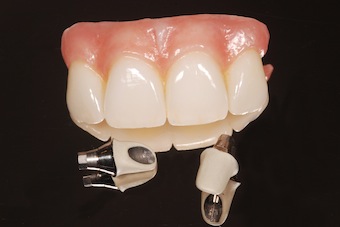When it comes to the restoration of implants, we typically have two treatment options: screw-retained or cement-retained.

Although both treatment options can be used predictably, they each have their own advantages and disadvantages:
Screw-retained
Advantages:
- Known retention
- Easy to remove/re-tighten if it were to become loose
- No risk of leaving residual cement
Disadvantages:
- Dependent on implant orientation/angulation
- May be unesthetic

Cement-retained
Advantages:
- Independent of implant orientation/angulation
- Enhanced esthetics
Disadvantages:
- Unknown retention
- Can be difficult to remove
Although a majority of the implants I restore are done as cement-retained restorations, in the past few years I have transitioned into restoring an increasing number of implants as screw-retained. Why this transition? Mainly because there is a lot of good research showing the problems associated with leaving residual cement.
(Click this link to read more dentistry articles by Greggory Kinzer)
References
The positive relationship between excess cement and perio-implant disease: A prospective clinical endoscopic study. Wilson TG Jr. J Periodontol 2009 80(9): 1388 – 92